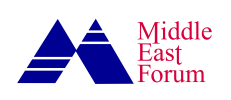Scholars widely trace the birth of Gulf Islamism to Saudi Arabia’s al-Sahwa al-Islamiyya (“Islamic Awakening”) of the 1960s-1980s. This was the time the Kingdom provided refuge for thousands of Muslim Brotherhood refugees from Egypt, Syria, and elsewhere. The Saudi mix of Muslim Brotherhood ideology with indigenous Salafi-Wahhabi practices gave rise to a grassroots Islamist reform movement. Sahwa activists engaged in non-violent social activism: They established religious schools, youth camps, and charities to carry out Islamic education. They promoted a greater role for clerics and more religious study, often in surprisingly “progressive” terms, and promoted women’s education, among other things. Therefore, though large swaths of society were socially conservative, Sahwa provided reformist Islam that spoke to a new generation.
From the 1990s onward, [Saudi Arabia] outlawed Sahwa forums, closed affiliated institutions, and imprisoned and exiled many Sahwa leaders.
By the late 1980s, Sahwa was something of a force across the Gulf, causing growing anxiety among monarchies that responded with repression. The Saudi state shifted gears. Where it once relied on Islamist currents to rally and organize popular support—for example, during the anti-Soviet fight in Afghanistan—from the 1990s onward, the state outlawed Sahwa forums, closed affiliated institutions, and imprisoned and exiled many Sahwa leaders. Even in the last few years, the Kingdom has arrested high-profile Sahwa-inspired clerics such as Salman al Awda and Awad al Qarni and charged them with capital crimes as part of an effort to repress Islamist challenges. Sahwa, however, has not disappeared as a potent social force. The associated support networks and ideology, while driven underground or removed from public space by the less vocal elements of activism, remain.
With Islamist parties illegal in the Arab Persian Gulf state, Muslim Brotherhood activists have taken a more decentralized approach. Rather than open political branches, they engage in informal social networks and charities. For example, the Muslim Brotherhood’s Islamic Constitutional Movement in Kuwait spent funding for years on youth clubs, student unions, and Islamic schools before contesting Kuwait’s limited elections. They put members on charity boards and Islamic banks to divert money to social initiatives. Across the region, Islamists have embedded themselves into universities, mosques, welfare agencies, and nongovernmental Islamic charitable organizations. This service-oriented approach, often framed as apolitical or cultural work, allows them to build grassroots support under the collective vision of social engagement without the state’s noticing.
There are local deviations from this pattern. In Saudi Arabia, where Sahwa was most influential, open Islamist politics is practically prohibited today, so past Sahwa leaders tend to be active only through authorized nongovernmental organizations and educational avenues or as unobtrusive religious instructors. Kuwait is an exception: It still permits an Islamist party in parliament. The Kuwait Muslim Brotherhood party has power both from its members of parliament and a wide civil society network of Islamic banks and charitable associations.
Qatar has made its media less open to extremists from neighboring countries, but its universities and media continue to be a platform for Islamist scholars.
Qatar once housed Islamist intellectuals, for example, providing refuge for Muslim Brotherhood clerics and transmitting their ideas on Al Jazeera and thus was an intellectual center of regional Islamism. In recent years, Qatar has made its media less open to extremists from neighboring countries, but its universities and media continue to be a platform for Islamist scholars. In Bahrain, Sunni Islamist factions, some of which are sympathetic to the Muslim Brotherhood, tend to back the monarchy, while the principal Shia Islamist parties such as the outlawed Al Wifaq were excluded or proscribed; the contest there is framed in terms of Sunni-Shi’a divisions.
Lastly, the United Arab Emirates has banned domestic Islamism in general, compelling any remaining Muslim Brotherhood networks to operate from outside. Across the Gulf region, these groups now tend to exist de facto as money conduits for the overall Muslim Brotherhood movement, albeit with their public statements toned down and nonpolitical.
While the Gulf monarchies may continue arresting or banning outspoken clerics, such coercion will have little effect on their capacity to mobilize. The new decentralized model—with activists strewn across universities, charities and cyberspace—renders the Sahwa movement difficult to uproot. To put it plainly, the Sahwa of yesterday hasn’t disappeared altogether and ideas and networks have not dissipated. Their corpus has merely gone into hibernation until a better moment arises for them to reclaim political ground.







